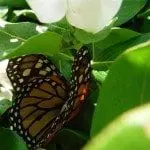When considering Creation VS Evolution, the first thing to realize is that it all depends on what you choose to believe in the first place. Only God was present when He created everything, and evolutionists believe that humans appeared extremely late in their picture of things, so deciding between the two is beyond the realm of the scientific method, which requires at least the ability to see something repeatedly, and better yet to see it under controlled, experimental conditions. Science by definition studies natural things so if you decide to “use science” to flesh out the past, you only allow natural explanations, so all the evidence will be arranged to fit that framework.
It’s been firmly established that natural processes aren’t causing living things to pop into existence from chemicals today, and clearly living things aren’t wildly changing from generation to generation, so the only plausible explanation for the existence of all life within this naturalistic framework is that somehow, under different conditions than any we’ve observed, chemicals gradually became a living thing, and then mutations (acted on by natural selection and other natural processes) changed living things over many generations into all the things that have ever lived.
Now, even if all this turned out to be possible, there’d still be the question of how likely it was, and yet again whether or not it actually happened. However, I believe a study of complexity, change, and causes of different changes makes it clear that only intelligent beings can produce truly new forms of systematically organized dynamic complexity. Although evolutionists sometimes insist that the origin of life isn’t part of evolution, if natural processes cannot produce life, then we know that the “scientific” or naturalistic approach to divining the past fails at that point, and if a supernatural explanation is needed for anything in the past, then we know that science truly only applies for things we can repeatedly observe and demonstrate to be true.
So think about a list of physical things of different complexity. You can have a lot of them provided randomly from sites like https://www.randomlists.com/nouns, or with sets of words such as those available at http://magneticpoetry.com/. You might add some things like “watch, car, computer, wind-up toy, robot, nest, hive, shell, leaf. Now go through the list and see if you can arrange them (rows, lines, groups?) by thinking about how complex they are.
How many different kinds of matter are required? How many different shapes of parts? Do the shapes have to be exact? How many parts have to be joined together in specific ways? How much movement is required in the parts? What kind of movement? Are there different kinds of movement? Is the movement systematic, precisely constrained, steadily repeated? Are chemical reactions involved? How about controlled flows of fluids, gasses, or electrons (electricity)? Is the object (or parts of it) defined by its ability to fit in or otherwise interact specifically with something else, for example, the way a key fits a lock? Does it include a series or group of things that have to be in a certain order, even though there’s no chemical or physical necessity for the sequence or structure?
From my experience, non-living things formed by natural processes not involving a living thing can have specific shapes or intricate patterns, as in crystals and snowflakes, or they can be dynamic but mostly chaotic other than swirls (whirlpools, tornadoes, hurricanes), but only the greatest efforts of human intelligence produce systematically organized and dynamic complexity (SODC), from wind-up toys to cars and planes, computers and robots. Living things have many parts which show characteristics that are only found in these advanced artifacts, but living things are even more complex and capable of gathering energy, gathering nutrients, processing nutrients and adding material from them for self-repair and controlled growth, and actively and precisely reproducing themselves. Furthermore, if we take things with SODC that are not alive and expose them to natural conditions, they are either preserved by freezing but thereby prevented from functioning, or they are more or less quickly broken down into their basic components.
For five decades or more, researchers have been attempting to create combinations of chemicals in different forms, different kinds of energy, and other natural (and artificial) conditions and processes that might produce life, and have not begun to approach a set that produce something with SODC. Taking this in consideration that all the natural conditions we’ve actually observed in nature destroy anything of this nature that might be produced, and living things (even “simple” ones like bacteria) have more SODC and can do things that our most advanced technologies cannot, doesn’t it seem ridiculous to believe that natural, non-living processes alone could ever produce a living thing?
See an example of organizing things according to their different kinds and degrees of complexity HERE.






